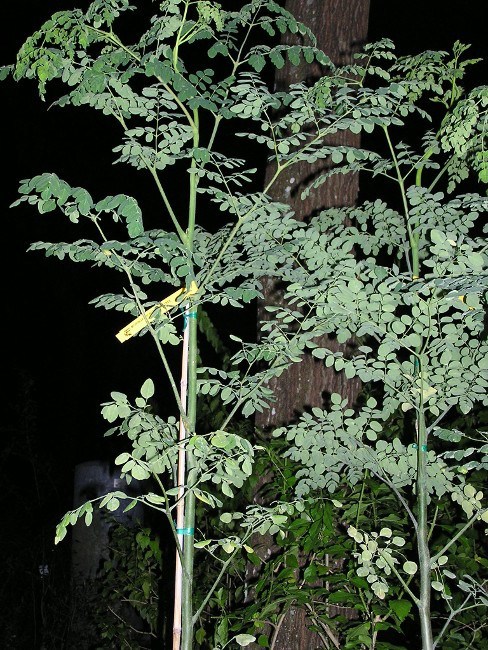Moringa Trees
Moringa oleifera
aka Horseradish Tree | Drumstick Tree | Tree of Life | Miracle Tree
Moringa is a fast growing, deciduous, drought resistant tree, native to the Himalayan Mtns and tropical Asia.
Young seed pods & leaves are used as vegetables in northwestern India. Also naturalized in Africa & tropical America.

WHAT IT LOOKS LIKE
A slender, semi-deciduous, perennial tree in tropical climates, Moringa can reach a height of 32-40ft. But it is often kept trimmed to a 6' tree so pods and leaves remain within arm's reach.
Moringa is sensitive to frost, grows best in dry, sandy soil, and is drought tolerant when mature. Sometimes grown as an annual in zone 9, then propagated from cuttings taken in the fall, potted, and planted out again in the spring.
Young shoots have purplish or greenish white, hairy bark. Mature trees have a corky gray bark. Tree has an open crown of drooping, fragile branches and the leaves are leathery feeling and fernlike in appearance.
HOW IT IS USED AROUND THE WORLD
Flowers are yellowish white and quite fragrant. Self fertile, flowers begin w/in the first 6 months of age; flowering occurs Apr-Jun in seasonally cool regions --- like north central or central Florida. Slender "pods" are sometimes up to 18" long, harvested late summer to autumn. Sometimes described as a cross between peanuts & asparagus.
Flowers, pods, leaves and even twigs are cooked and eaten by various cultures. A horseradish-flavored condiment is prepared from the peeled, crushed roots. Ben oil is extracted from the seeds and used by watchmakers because of its fine qualities. Perfume makers use the flowers.
Indian publications claim its leaves contain 7x's the vitamin C of oranges, 4x's the calcium of milk, 3x's the potassium of bananas, and 2x's the protein of yogurt.
Can be grown in zones 9-10, in a well drained area, but with consistent water. Keep from freezing.
